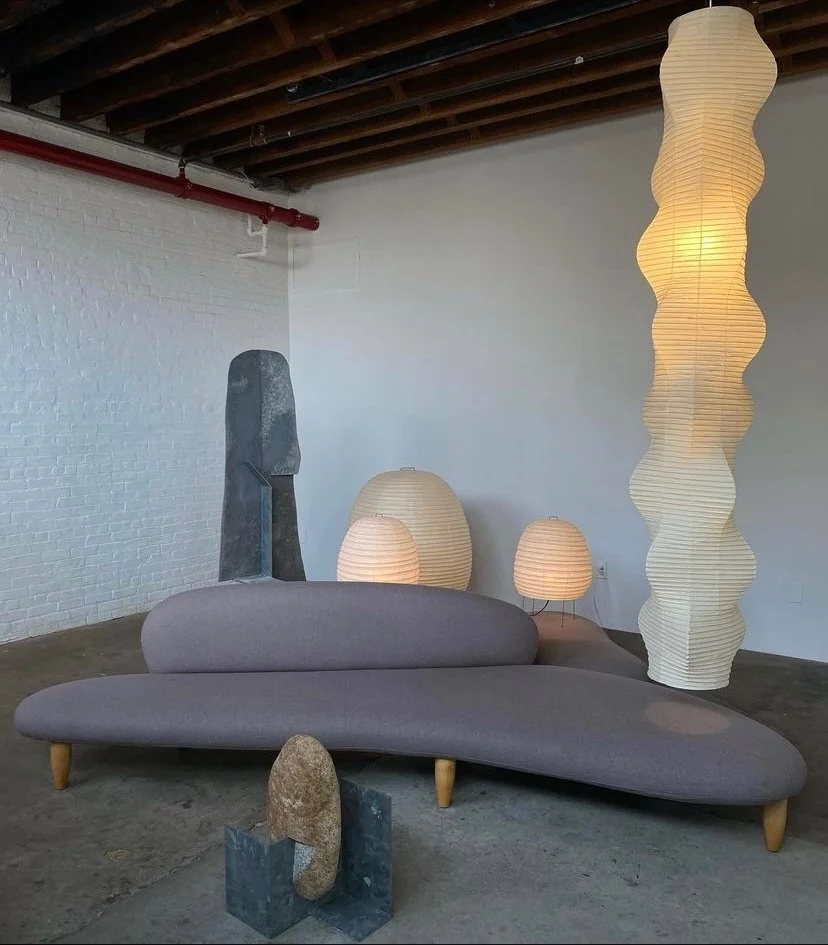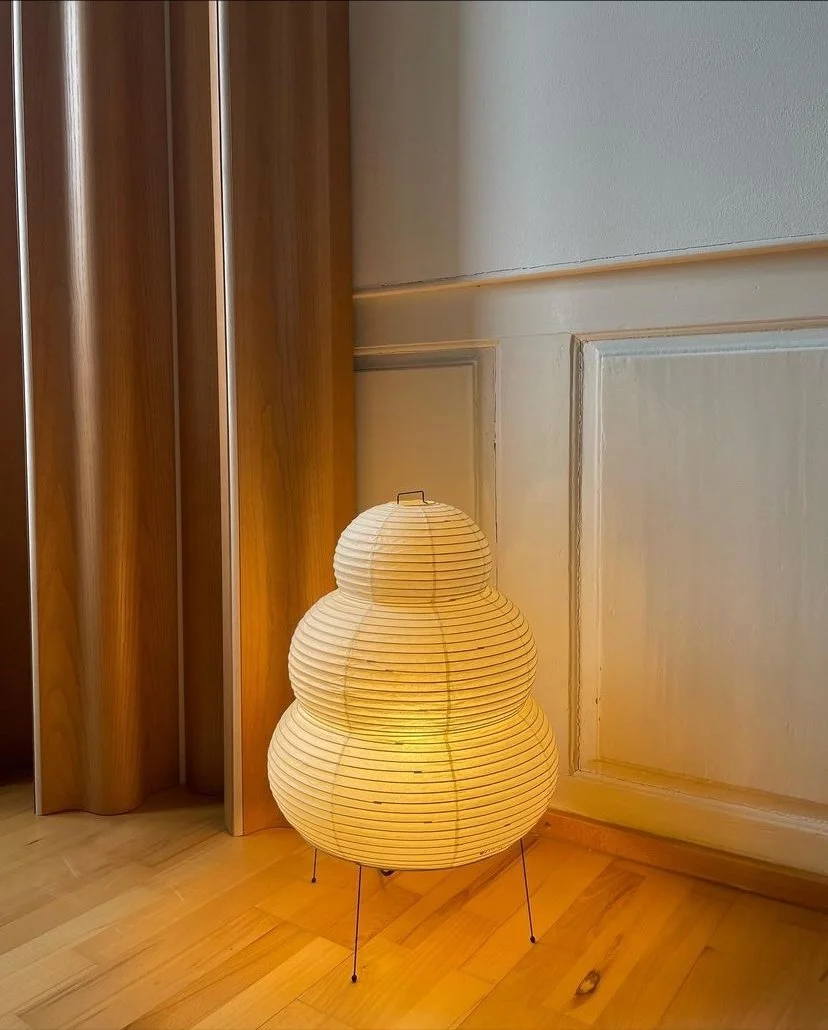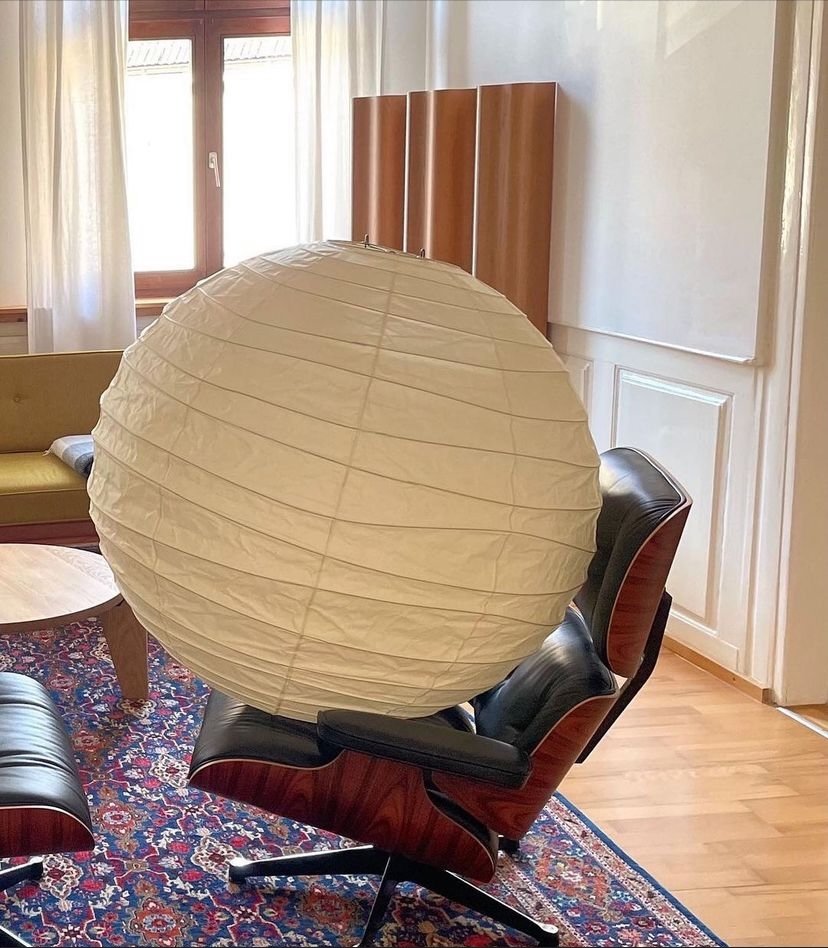Akari Light Sculptures by Isamu Noguchi
Words by Rachel Heaney. Photo sources as indicated.
Above: The light, bright and cozy living room of Sweden-based Thuy Nguyen. Photo by Thuy Nguyen.
Isamu Noguchi (1904-1988) was a world-renowned sculptor and artist across numerous mediums.
With a shared upbringing between Japan and the United States, Noguchi was deeply influenced by both his Japanese heritage, his childhood in the States and the time spent between the two countries throughout his life.
Though Noguchi was well-known for designing and creating furniture, sculpture, ceramics, gardens and built spaces, he is most recognized for his Akari Light Sculptures. Akari, meaning “light as illumination”, were designed in Gifu, Japan and utilized the traditional Gifu method of construction. Each Akari is still assembled using the same technique, today.
Washi paper, made from the inner bark of a mulberry tree, is cut into strips and glued to bamboo ribbing, which has been stretched across a wooden framework that dictates the shape of each sculpture. Once the glue has dried, the framework is removed, leaving the ethereal and lightweight form of Akari.
The birth of Noguchi’s Akari Light Sculptures occurred in 1951 and they were officially available to the public in 1952. At this time, the sculptures are still made at the original Ozeki workshop in Japan.
Akari’s relevance in the design world remains pronounced. It seems that every interiors influencer, celebrity and designer has one of the organic and delicate forms adorning their home. And it’s no wonder why. Soft, diffused light, paired with the earthy washi paper, exudes warmth and comfort in any space, while simultaneously bringing an understated elegance. The result: an effortless, wabi-sabi feel. To add Akari to one’s home is to adore a functional piece of art that transcends trends and maintains its significance in any decade.
Click here to read a more in depth biography of Noguchi and keep scrolling to see how Akari elevates and transforms each of the spaces, below.
Above: Akari Light Sculptures float amongst the Freeform Sofa and a pair of stone sculptures, all works of Noguchi. Photo by Leah Krouse.
Above: As Noguchi liked to say, “All that you require to start a home are a room, a tatami and Akari.” Photo by @aaroninteriors
Above: Lanterns and soft, sheer curtains contrast perfectly with the heaviness of a marble coffee table and steel-framed lounge chair. Photo by Danish blogger Helene Houe.
Above: An iconic duo if we ever did see one: the Eames Lounge Chair snuggled up to a jumbo Akari. Photo by @aaroninteriors.
Shop Akari Light Sculptures new at The Noguchi Museum or find one pre-loved at an online vintage retailer like 1st Dibs or Chairish.
Follow The Noguchi Museum on Instagram via @noguchimuseum.





